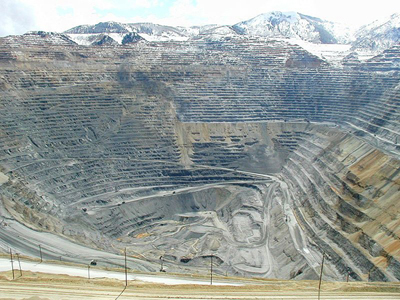Mining: Introduction

One of the largest human-made holes in the world is a copper mine near Salt Lake City, Utah. The Kennecott copper mine is 2 ½ miles across at the top and ¾ of a mile deep, and can be seen from space. Giant electric shovels can scoop up as much as 98 tons of material with a single swoop—the mass of about 50 cars. The mining trucks that haul the copper ore out of the pit stand more than two stories high and weigh more than a jumbo jet. Can you imagine being the driver of one of those trucks and riding two stories high as you maneuver it around? A single tire for these trucks can cost $26,000, but that’s puny compared to the $20 million electric shovels used at the mine. This gigantic mine has produced more copper than any other mine in the history of the world—more than 18 million tons. Still producing, it makes a significant contribution to the local economy and our world supply of copper.
In this section, you'll see some of the various ways that we extract mineral resources from Earth and see that, like many other things we do, mining has a unique impact on the environment.